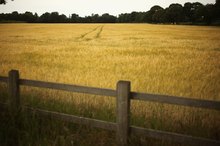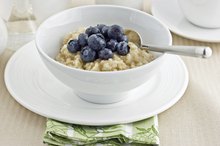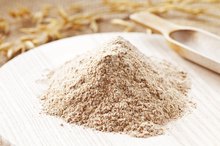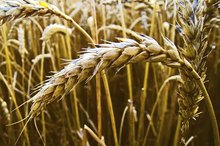What does fact checked mean?
At Healthfully, we strive to deliver objective content that is accurate and up-to-date. Our team periodically reviews articles in order to ensure content quality. The sources cited below consist of evidence from peer-reviewed journals, prominent medical organizations, academic associations, and government data.
- National Digestive Diseases Information Clearinghouse: Celiac Disease; September 2008
- Food and Drug Administration: Gluten-Free Labeling Proposed Rule
The information contained on this site is for informational purposes only, and should not be used as a substitute for the advice of a professional health care provider. Please check with the appropriate physician regarding health questions and concerns. Although we strive to deliver accurate and up-to-date information, no guarantee to that effect is made.
Lucky Charms Cereal & Gluten
Approximately one in every 133 people in the United States has a sensitivity to gluten, a medical condition known as celiac disease, according to the National Digestive Diseases Information Clearinghouse. Gluten is a protein found in wheat, rye and barley but is often hidden in many other ingredients. None of the Lucky Charms cereals, including original or chocolate, contain wheat, but General Mills does not certify that they are gluten free 1.
Ingredients
The original Lucky Charms cereal lists whole-grain oats as the first ingredient with oat flour as another ingredient 1. General Mills recently changed the formulation for Chocolate Lucky Charms, making the main ingredient whole-grain corn with corn meal instead of oat flour 1. Neither cereal specifically contains wheat, rye or barley or any products produced from these grains, yet this does not make them safe to consume for all people sensitive to gluten.
Oats and Gluten
List of Wheat-Free Foods
Learn More
Oats do not specifically contain gluten. Despite this, many people sensitive to gluten also react to oats; others tolerate oats, especially in a limited amount. The U.S. Food and Drug Administration, or FDA, does not list oats as one of the “prohibited grains” in their definition of gluten free, leaving it up to each individual on whether she considers oats an item to avoid. The explanation for this centers around the processing of the oats and the probability of contamination by gluten-containing grains. Oats are grown, transported and stored in bulk, usually with other grains such as wheat. When processing the oats, they can become contaminated with wheat, rye or barley, introducing gluten into the oats. Unless the oats are specifically handled and processed in separate gluten-free areas, manufactures do not claim them to be gluten free.
- Oats do not specifically contain gluten.
- When processing the oats, they can become contaminated with wheat, rye or barley, introducing gluten into the oats.
Definition of Gluten Free
Some foods are naturally gluten free. These include meats, milk, 100 percent fruit juices, fresh fruits and vegetables and single-ingredient foods. Many processed foods, including breakfast cereals, contain ingredients derived from gluten-containing grains. The FDA allows manufacturers to label foods as gluten free if they meet certain criteria. Gluten-free foods cannot contain any prohibited grains, which include wheat, rye, barley and crossbreeds of any of these. Gluten-free foods cannot contain any food derived from a prohibited grain unless it was processed to remove the gluten and results in no more than 20 parts per million of gluten. Chocolate Lucky Charms, which does not contain a prohibited grain or oats, should be fine for celiac patients to eat, but General Mills does not certify it as a gluten-free food 1.
- Some foods are naturally gluten free.
- Chocolate Lucky Charms, which does not contain a prohibited grain or oats, should be fine for celiac patients to eat, but General Mills does not certify it as a gluten-free food 1.
Impact of Celiac Disease
Foods Containing Gluten & Gliadin Proteins
Learn More
Celiac disease can cause a variety of symptoms that often go undiagnosed and untreated. Common symptoms include:
- abdominal pain
- bloating
- gas
- constipation
- diarrhea
- fatty stools
- weight loss
Beyond these symptoms, celiac disease causes damage to the small intestine that can interfere with the absorption of nutrients, causing malnutrition that can lead to anemia, osteoporosis, liver disease and intestinal cancer.cause
- Beyond these symptoms
- celiac disease causes damage to the small intestine that can interfere with the absorption of nutrients
- causing malnutrition that can lead to anemia
- osteoporosis
- liver disease
- intestinal cancer
To avoid these additional complications, those with celiac disease need to avoid gluten, even in the absence of symptoms, to avoid continued intestinal damage. The best way to avoid gluten is to only consume foods certified as gluten free, which may mean living a Lucky Charm-free life.
Related Articles
References
Writer Bio
Stephanie Chandler is a freelance writer whose master's degree in biomedical science and over 15 years experience in the scientific and pharmaceutical professions provide her with the knowledge to contribute to health topics. Chandler has been writing for corporations and small businesses since 1991. In addition to writing scientific papers and procedures, her articles are published on Overstock.com and other websites.









